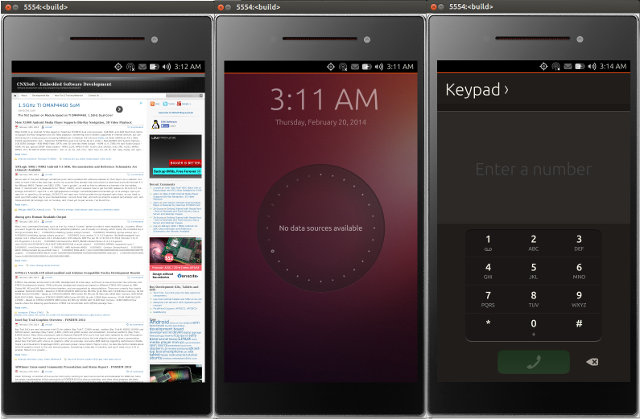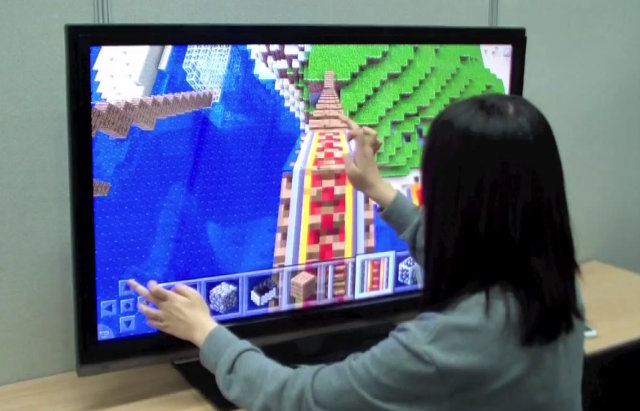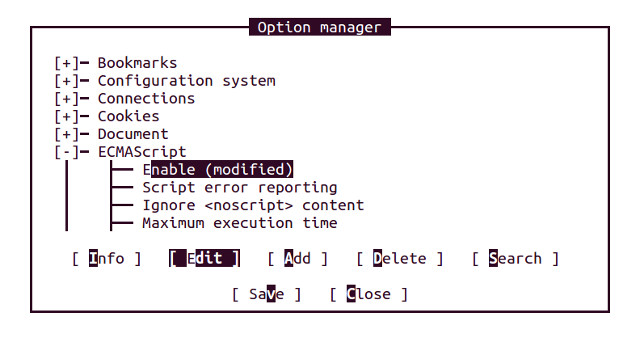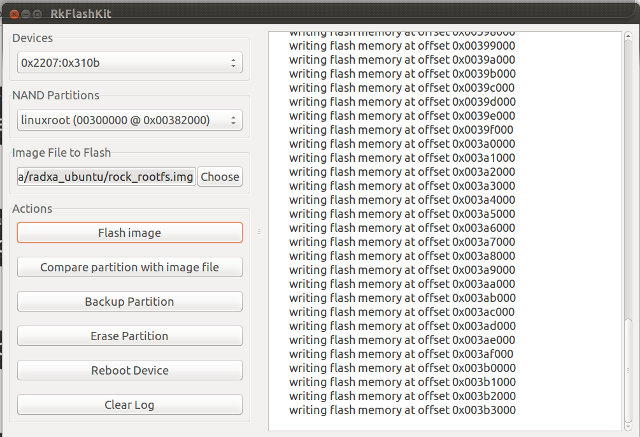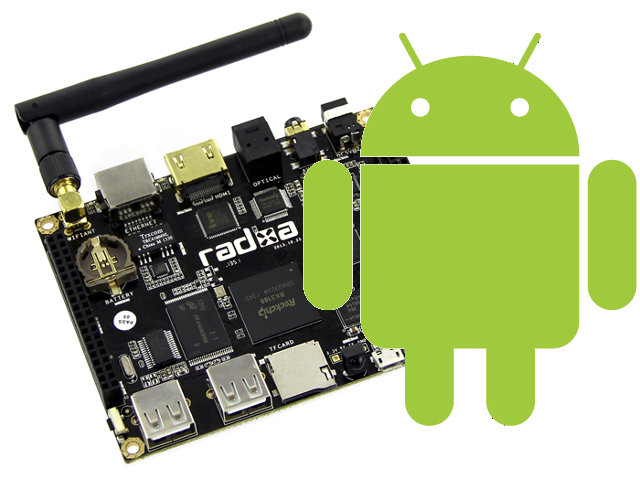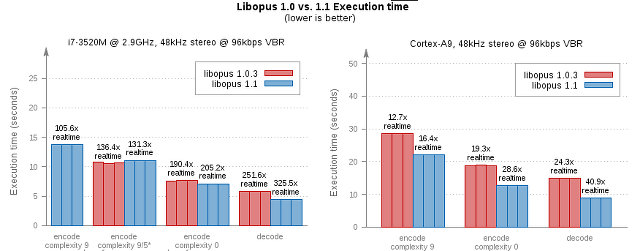Flappy Bird is a ridiculous fad, and I promised myself not to write about this silly game. I managed to resist when somebody showed off their Arduino powered real-life Flappy Bird, but then XDA developers mentioned one of their member posted instructions to customize Flappy Bird game. I thought it might be fun to personalize the game with pictures of friends or family members, and at the same time, learn how to hack apk files. Instead of real persons, I’ve replaced the original bird, by Tux, the official Linux mascot, flapping wings not included. The instructions in XDA dev forums are mainly for Windows, but I’ve adapted them to Linux, and “created” “Flappy Tux” from Ubuntu 13.10. I’ll assume you’ve already installed OpenJDK and the Android SDK and have a working Android app development environment. I think we just need adb and aapt from android-sdk-linux/platform-tools/bin to be in the path. […]
Try Ubuntu Touch on Your Computer with Ubuntu Touch Emulator
Canonical has just announced Meizu (China) and Bq (Europe) will be the first manufacturers to launch Ubuntu Touch phones at the end of 2014. But if you want to try Ubuntu Touch, and don’t own a Google Nexus 4 or 7, or simply don’t want to flash Ubuntu Touch to your devices, you can do so using Ubuntu Touch x86 Emulator in your computer running Ubuntu , or in an Ubuntu Virtual machine in Virtualbox or VMWare. The emulator has been available since last November, but Ricardo Salveti announced an updated version, the first public preview, with the following changes: Better TLS handling (not using the Android slots, but using pthread_set/getspecifics instead) Qt packages compatible with OpenGL ES 2.0 available at https://launchpad.net/~rsalveti/+archive/qt-gles-test It has been tried on Ubuntu Trusty (14.04), but I could run it just fine on Ubuntu Saucy (13.10), by following the instructions below in a terminal: Download […]
How to Convert Your HDTV into a Massive Touchscreen Enabled Android Tablet
Thanks to Android mini PCs, it’s now very easy and cheap to run Android on your HDTV, but most of the time touchscreen functionality is missing. There are already full products such as AIO Android PCs, and Smart Displays that brings Android to large display with touchscreen, and PQ Labs iStick A200 HDMI TV stick supports directly their overlay touch frames so you can “touchscreenize” your TV with their mini-PC and correct frame connected via USB. If you’d rather use another model of infrared touch frame for your TV and own Android device, Hardkernel has just explained how to do in the February edition of ODROID magazine using their ODROID-XU development board. In the magazine, they explain some details about the difference between capacitive and infrared touchscreens, and provide instructions to choose the right IR touch frame, how-to modify the software if necessary, and how to connect the touch frame to […]
Building eLinks Text-based Web Browser with (Some Sort of) JavaScript Support
Yesterday, I’ve spend some time trying to find a text-based web browser with support for JavaScript. Although I doubt many people would need that, I’ll post my findings, and show how to build and enable Javascript in eLinks web browser to access the web from a terminal in Linux (Ubuntu/Debian). Bear in mind that the implementation is far from complete, and most pages won’t work, at least for now. Initial research pointed me to three potential candidates: links2, w3m + w3m-js extension, and elinks. Links2 used to have JavaScript, but support was poor, so they decided to remove it. w3m-js is an experimental patch to add JavaScript to w3m, but the link is broken, so we are left with elinks. If you just want a text based web-browser, and do not care about JavaScript, you can just install links2, w3m, or elinks with apt-get. The versions I’ve tried in Ubuntu […]
How to Install XBMC on D-Link Boxee Box
D-Link Boxee Box is a Linux based media player powered by Intel Atom CE4100 processor that became available in 2010, and features a dual sided RF remote / QWERTY keyboard that probably inspired many of the air mouse that are available today. The box features many of the ports and connectors that are available on most Android STB today, namely an HDMI port, an optical S/PDIF) out, a stereo analog audio out, Ethernet and 802.11n Wi-Fi, two USB ports, and an SD card slot. Many people however got disappointed with the firmware at launch time, and even if subsequent firmware updates have improved the user experience, some people have considered it was worth the effort to port XBMC to the device. Myles McNamara wrote the instructions to install XBMC on D-Link Boxee Box. I’ll summarize the steps below, and it appears to be relatively easy. Installing Boxee+Hacks to gain root […]
Getting Started with Raxda Rock – How to Generate and Flash Ubuntu Saucy Server and Desktop Images
I’ve already written a guide showing how to build and install Android in Radxa Rock. Today I’m going to build the Linux kernel, generate a Ubuntu server images based latest Ubuntu Linaro server release, flash the image to the NAND flash, and show how to install LXDE or XFCE desktop environment. If you are just interested in installing one of the latest supported images, you can download Android, dual boot (Android/Ubuntu), Ubuntu ALIP, and Router images for Radxa Rock @ http://dl.radxa.com/rock/images/, and skip “build” and “generate” instructions, and just follow the flashing instructions below. All steps in this tutorial will be done in Ubuntu 13.10, and lots of the instructions below follow hwswbits blog and Ubuntu Radxa Wiki. Build the Linux kernel Let’s start by building the Linux kernel. I’m assuming you’ve already install development tools in Ubuntu (e.g. apt-get install build-essentials). You can refer to the list at the beginning […]
Getting Started with Raxda Rock – Building an Android 4.2 Image from Source
I’ve posted some pictures, and show some basics how to get started in my first post about Radxa Rock. Today, I’ll post my experience trying the instructions to build Android for Radxa Rock in Ubuntu 13.10. Many of the instructions are also valid for other RK3188 devices. The source code is currently located in a private git repository, and if you’re sure you want to get the Android source code, you should send an e-mail to [email protected] to be granted access to their private repo. Within minutes, I’ve received an email with the subject “GitLab | Account was created for you” to register an account. You’ll then need to add an SSH key just like you’d do for Github. Assuming you’re already using a service like github, you should already have SSH key. Simply type cat ~/.ssh/id_rsa.pub, copy the output, and go to git.linux-rockchip.org/profile/keys, login if needed, and click on […]
Opus Open Source and License-free Audio Codec Decreases Latency over VoIP Codecs, (Slightly) Betters MP3 and AAC Quality
I’ve just stumbled upon Opus, a relatively new audio codec, with the release of version 1.1 implementation which improves encoding quality for VBR audio, automatically detect audio or speech to select the best encoding mode, and improved 5.1 surround quality/compression ratio. The new release also bring speed improvements for all architectures, and specifically for ARM, where decoding uses around 40% less CPU and encoding uses around 30% less CPU thanks to the use of NEON compared to an earlier version. You can go to the online demo page to find more about the latest released, and try some of the latest improvements. This all looks fun, but I wanted to know more about Opus, and especially how it compares against MP3 or AAC. It turns out Opus was not originally designed to compete against MP3/AAC which are used to store audio, but instead it was meant to be used for […]



